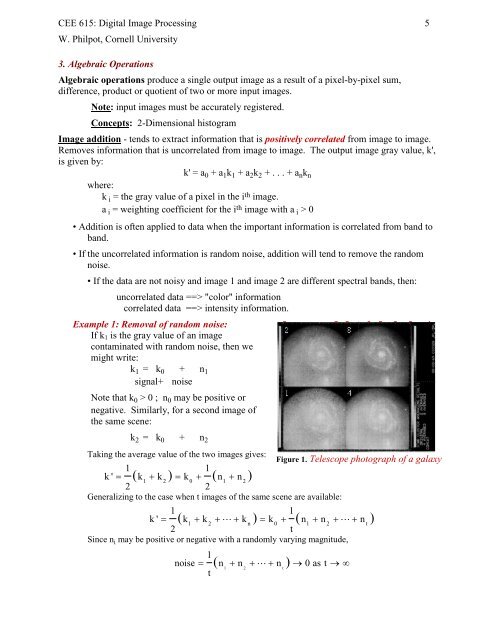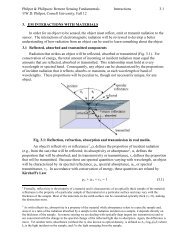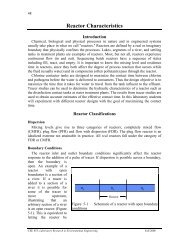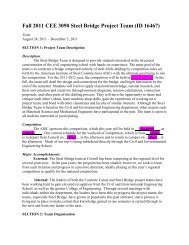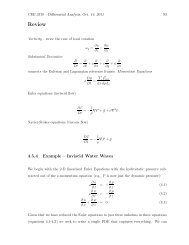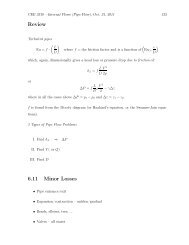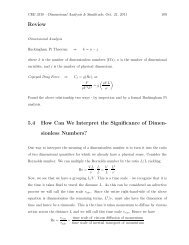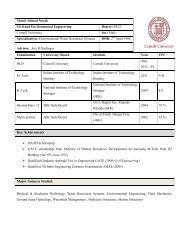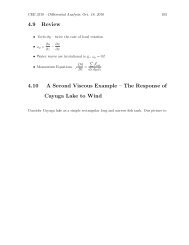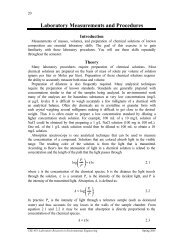Spectral Feature Extraction - Cornell University
Spectral Feature Extraction - Cornell University
Spectral Feature Extraction - Cornell University
Create successful ePaper yourself
Turn your PDF publications into a flip-book with our unique Google optimized e-Paper software.
CEE 615: Digital Image Processing 5<br />
W. Philpot, <strong>Cornell</strong> <strong>University</strong><br />
3. Algebraic Operations<br />
Algebraic operations produce a single output image as a result of a pixel-by-pixel sum,<br />
difference, product or quotient of two or more input images.<br />
Note: input images must be accurately registered.<br />
Concepts: 2-Dimensional histogram<br />
Image addition - tends to extract information that is positively correlated from image to image.<br />
Removes information that is uncorrelated from image to image. The output image gray value, k',<br />
is given by:<br />
k' = a 0 + a 1 k 1 + a 2 k 2 + . . . + a n k n<br />
where:<br />
k i = the gray value of a pixel in the i th image.<br />
a i = weighting coefficient for the i th image with a i > 0<br />
• Addition is often applied to data when the important information is correlated from band to<br />
band.<br />
• If the uncorrelated information is random noise, addition will tend to remove the random<br />
noise.<br />
• If the data are not noisy and image 1 and image 2 are different spectral bands, then:<br />
uncorrelated data ==> "color" information<br />
correlated data ==> intensity information.<br />
Example 1: Removal of random noise:<br />
If k 1 is the gray value of an image<br />
contaminated with random noise, then we<br />
might write:<br />
k 1 = k 0 + n 1<br />
signal+ noise<br />
Note that k 0 > 0 ; n 0 may be positive or<br />
negative. Similarly, for a second image of<br />
the same scene:<br />
k 2 = k 0 + n 2<br />
Taking the average value of the two images gives:<br />
Figure 1. Telescope photograph of a galaxy<br />
1 1<br />
k' = ( k + k ) = k + ( n + n )<br />
1 2 0 1 2<br />
2 2<br />
Generalizing to the case when t images of the same scene are available:<br />
1 1<br />
k' = ( k + k + + k ) = k + ( n + n + + n )<br />
1 2 n 0 1 2 t<br />
2 t<br />
Since n i may be positive or negative with a randomly varying magnitude,<br />
1<br />
noise = ( n + n + + n ) →0 as t →∞<br />
1 2 t<br />
t


